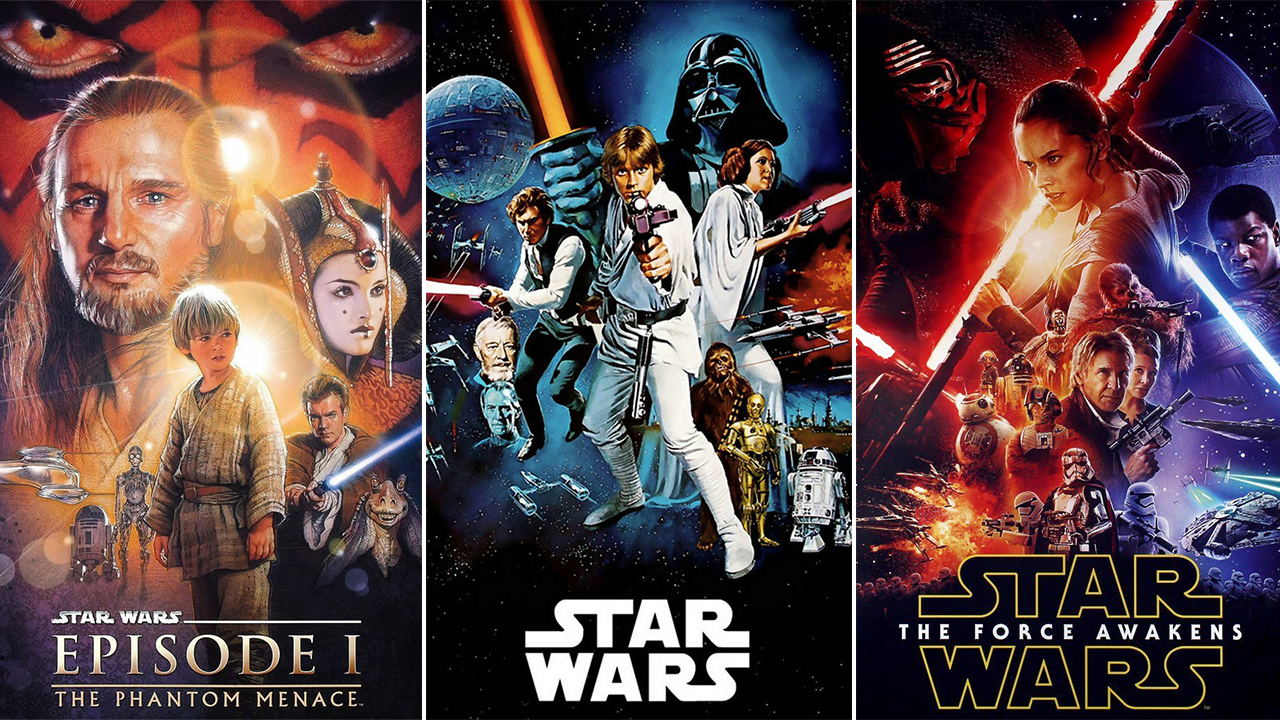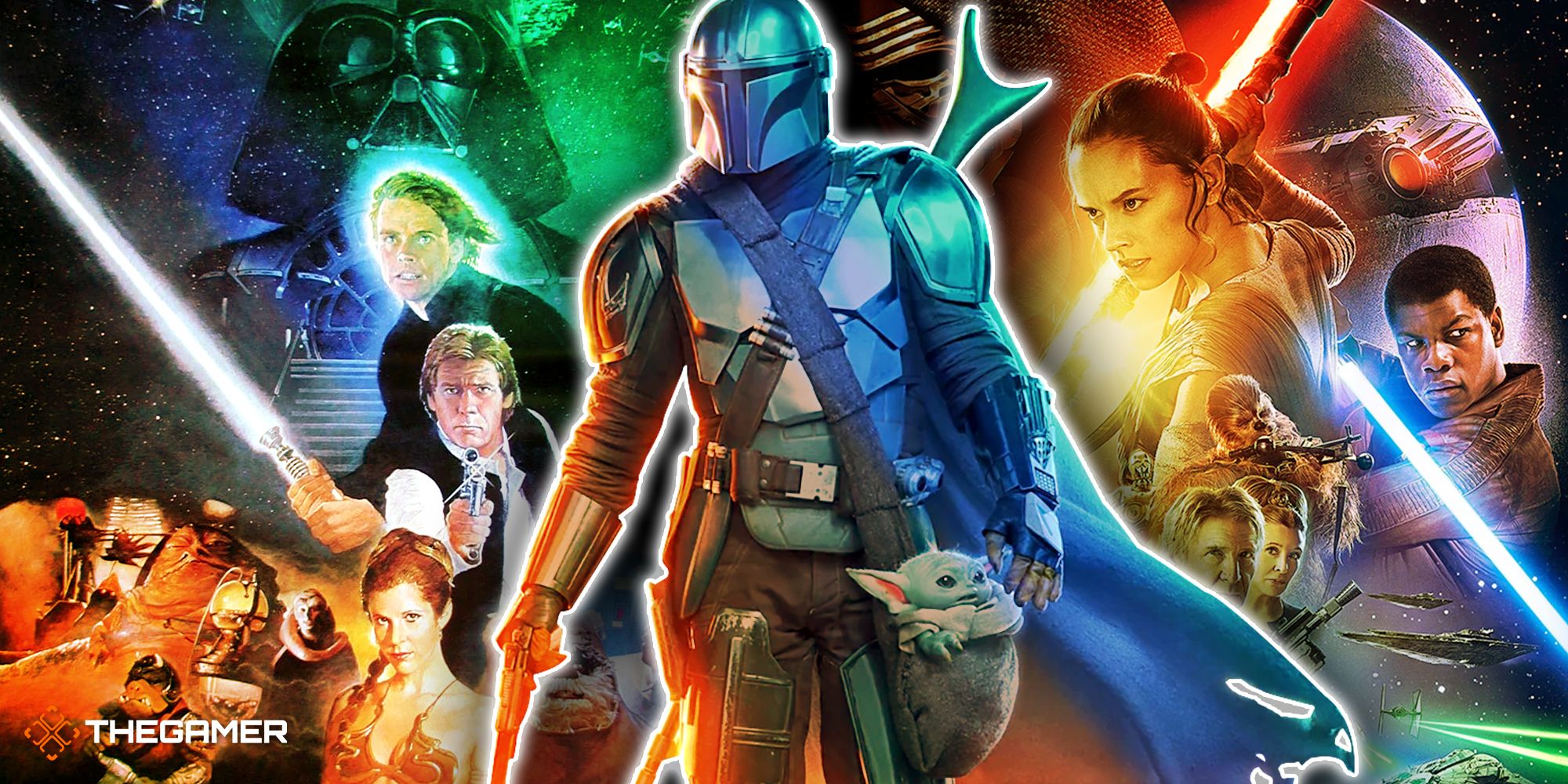Ever wondered about the order of Star Wars released? If you're a fan of the galaxy far, far away, it's time to dive deep into the saga's timeline. Whether you're a die-hard fan or just dipping your toes into the Star Wars universe, understanding the release order is key to enjoying the epic story. So grab your lightsaber and let's get started!
There's something magical about Star Wars that keeps fans coming back for more. The movies have become a cultural phenomenon, and with so many films out there, it can be overwhelming to figure out where to start. That's why we're here to break it down for you, making sure you're not lost in space when diving into the saga.
From the original trilogy to the sequel series, every movie adds a new layer to the story. Understanding the order of Star Wars released is not just about knowing which came first; it's about appreciating how each film builds on the last, creating a rich tapestry of storytelling. Let's explore it together!
Read also:The Bling Ring Real Life A Tale Of Fame Fortune And Folly
Why Knowing the Order of Star Wars Released Matters
Knowing the order of Star Wars released can enhance your viewing experience. It helps you follow the storylines more effectively, especially since the films often reference events from previous movies. Plus, it gives you bragging rights among your friends when you can name the films in chronological order.
For new fans, figuring out the sequence can be tricky. Should you watch the films in release order or story order? That's a debate that has raged on for years. Some fans prefer the release order because it mirrors how the story unfolded for the original audience. Others like the story order because it follows the timeline of events within the universe.
No matter which way you choose, understanding the order of Star Wars released can deepen your appreciation for the saga. It's like piecing together a giant puzzle where each piece adds a new dimension to the overall picture. Let's break down both approaches so you can decide what works best for you.
Breaking Down the Release Order
Let's start with the release order, which is how the films were introduced to the world. This is the sequence in which the movies hit theaters, capturing the imagination of audiences one epic adventure at a time.
Episode IV: A New Hope
Released in 1977, this is where it all began. A New Hope introduced us to Luke Skywalker, Princess Leia, and Han Solo. It's the film that started it all, and it's still beloved by fans worldwide.
Episode V: The Empire Strikes Back
In 1980, the story deepened with The Empire Strikes Back. This film is often considered the best in the series, thanks to its darker tone and unexpected twists.
Read also:Caroline Couric Monahan The Remarkable Journey Of A Trailblazing Journalist
Episode VI: Return of the Jedi
Wrapping up the original trilogy in 1983, Return of the Jedi brought the story of Luke Skywalker to a satisfying conclusion. It's all about the final battle and the redemption of Anakin Skywalker.
Exploring the Prequel Trilogy
Fast forward to the late '90s and early 2000s, and we have the prequel trilogy. These films delve into the backstory of Anakin Skywalker and the rise of the Empire.
Episode I: The Phantom Menace
Released in 1999, The Phantom Menace takes us back to the beginning. It introduces young Anakin and sets the stage for his eventual fall to the dark side.
Episode II: Attack of the Clones
In 2002, Attack of the Clones explores Anakin's relationship with Padmé Amidala and the growing tensions in the galaxy. It's a film filled with action and romance.
Episode III: Revenge of the Sith
Wrapping up the prequel trilogy in 2005, Revenge of the Sith shows the transformation of Anakin into Darth Vader. It's a powerful and emotional conclusion to the prequels.
The Sequel Trilogy: Continuing the Saga
Jumping ahead to the 2010s, we have the sequel trilogy, which continues the story of the original characters while introducing new ones.
Episode VII: The Force Awakens
Released in 2015, The Force Awakens brings back familiar faces like Han Solo and Leia. It introduces new heroes like Rey and Finn, setting the stage for a new generation of adventures.
Episode VIII: The Last Jedi
In 2017, The Last Jedi explores themes of legacy and the nature of the Force. It challenges our perceptions of the characters and the story, sparking intense discussions among fans.
Episode IX: The Rise of Skywalker
Wrapping up the sequel trilogy in 2019, The Rise of Skywalker brings the story full circle. It ties up loose ends and celebrates the legacy of the saga.
Other Films in the Star Wars Universe
Beyond the main saga, there are other films that expand the Star Wars universe. These include:
- Rogue One: A Star Wars Story - Released in 2016, this film tells the story of how the Rebel Alliance obtained the Death Star plans.
- Solo: A Star Wars Story - Released in 2018, this film delves into the early adventures of Han Solo and Chewbacca.
These films are not part of the main saga but add depth to the universe, offering standalone stories that enrich the overall narrative.
Choosing Between Release Order and Story Order
So, which order should you watch the Star Wars films in? That depends on what you're looking for. The release order lets you experience the films as they were originally presented, capturing the excitement and anticipation of each new release.
On the other hand, the story order follows the timeline of events within the Star Wars universe. This means starting with Episode I and ending with Episode IX, allowing you to see the full arc of Anakin Skywalker's journey from a young boy to Darth Vader and back to Anakin.
Ultimately, the choice is yours. Some fans even recommend watching a hybrid order, where you mix elements of both release and story order for the best of both worlds.
Key Stats and Fun Facts
Here are some interesting stats and facts about the Star Wars films:
- George Lucas created the original Star Wars trilogy, with the first film released in 1977.
- The Star Wars franchise has grossed over $10 billion at the box office worldwide.
- Mark Hamill, who played Luke Skywalker, initially auditioned for the role of Han Solo.
- The iconic "Star Wars" theme was composed by John Williams and has become one of the most recognizable scores in cinematic history.
These facts highlight the cultural impact of Star Wars and the lasting legacy of its films.
Expert Insights and References
To ensure the accuracy of this guide, we've referenced official Star Wars sources and expert opinions. Some key resources include:
- StarWars.com - The official website for all things Star Wars.
- Wookieepedia - A comprehensive Star Wars wiki with detailed information on the films and characters.
- Interviews with filmmakers and cast members, providing behind-the-scenes insights into the creation of the films.
These sources help us provide a reliable and authoritative guide to the order of Star Wars released.
Final Thoughts and Call to Action
In conclusion, understanding the order of Star Wars released is essential for any fan of the saga. Whether you choose to watch the films in release order or story order, each approach offers a unique perspective on the epic tale of the galaxy far, far away.
So, what are you waiting for? Grab your popcorn, fire up your streaming service, and dive into the Star Wars universe. And don't forget to share this guide with your fellow fans. Together, let's keep the Star Wars spirit alive!
Table of Contents
- Why Knowing the Order of Star Wars Released Matters
- Breaking Down the Release Order
- Exploring the Prequel Trilogy
- The Sequel Trilogy: Continuing the Saga
- Other Films in the Star Wars Universe
- Choosing Between Release Order and Story Order
- Key Stats and Fun Facts
- Expert Insights and References
- Final Thoughts and Call to Action


